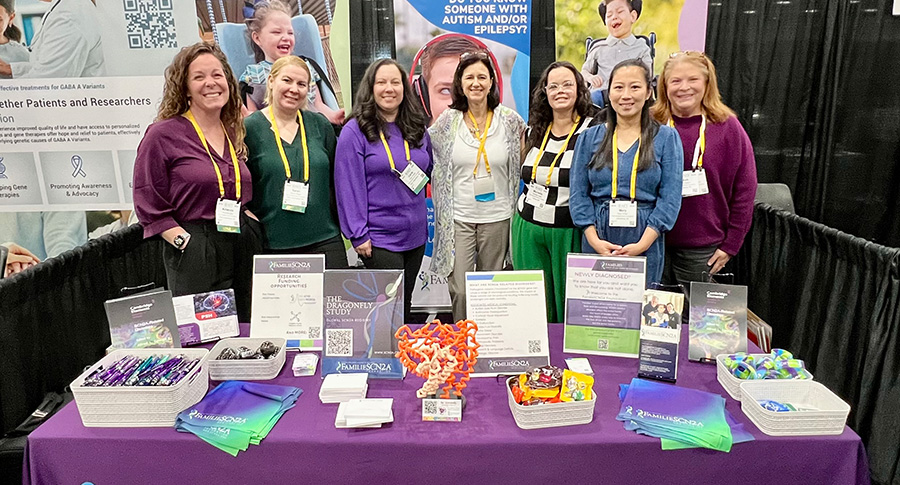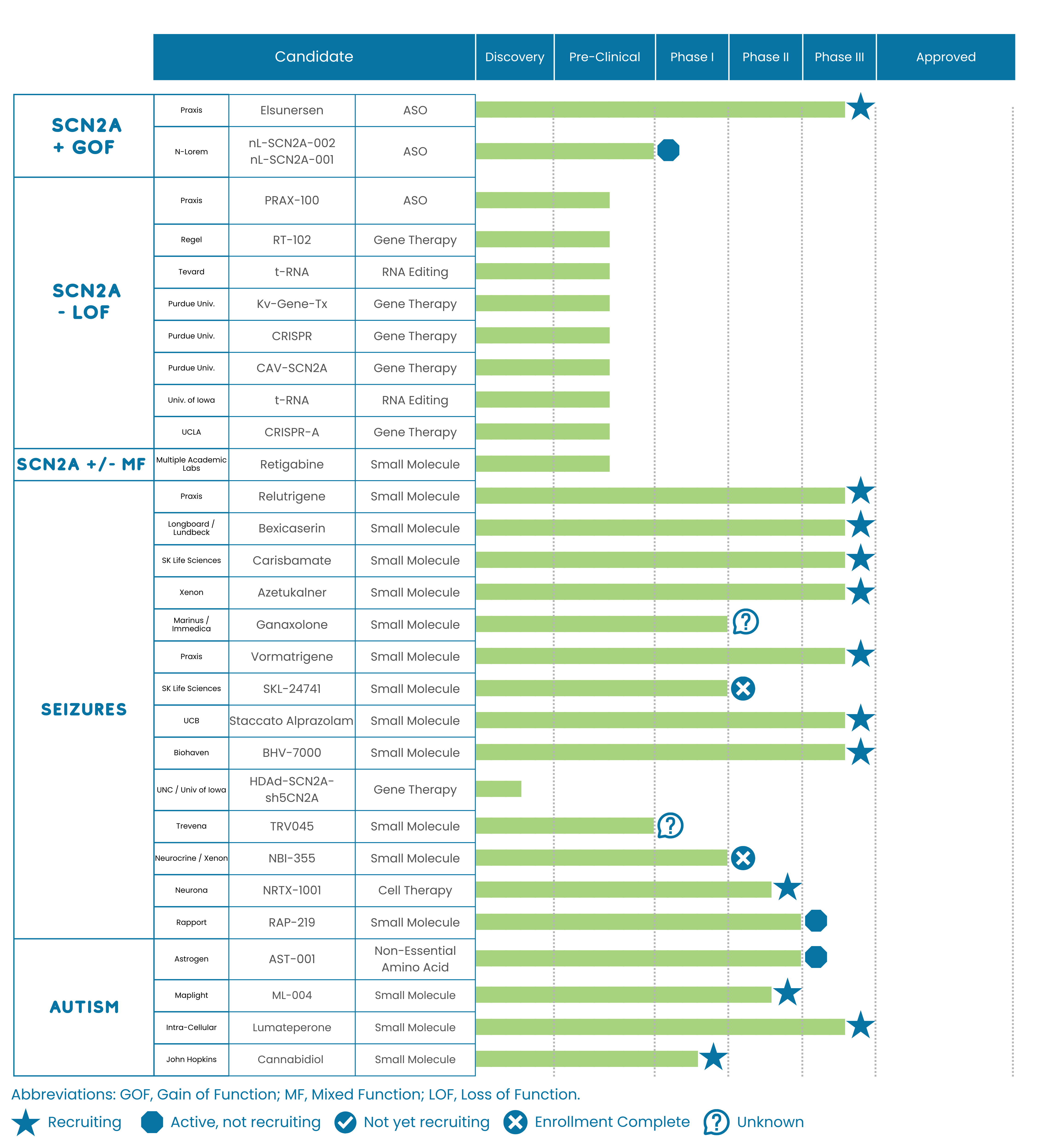
AES 2024 Recap: Collaboration, Innovation, and Progress in Epilepsy Research
The 2024 American Epilepsy Society (AES) Annual Meeting was a dynamic gathering of clinicians, researchers, advocates, and caregivers committed to advancing epilepsy care and treatment. This year’s event showcased groundbreaking research, fostered meaningful collaborations, and set the stage for future innovation.
The FamilieSCN2A Foundation Team was proud to represent our #SCN2A community at the 2024 American Epilepsy Society Meeting in Los Angeles last week! Over the course of 4 days, we worked tirelessly to spread awareness, educate, and collaborate on advancing care and treatments for SCN2A-related disorders.
In addition to 1-1 meetings with Industry leaders and clinicians focused on treating SCN2A, our team divided up to accomplish as much as humanly possible. Here are the key highlights from our team:
Partners Against Mortality in Epilepsy (PAME)
Jenny Burke, Board Chair, participated in the annual PAME meeting. The sessions tackled critical topics surrounding epilepsy mortality, emphasizing the importance of understanding and preventing these outcomes. Key discussions included:
Vibrant SCN2A Exhibitor Booth Engagements
Our booth at AES 2024 was a hub of activity, filled with insightful conversations and enthusiastic attendees. The seamless setup, bolstered by the introduction of LEAD capture technology, allowed us to collect valuable demographic data and attendee insights. Genetic testing emerged as a dominant theme, marking its growing adoption as a standard clinical practice. We look forward to fostering these connections through future outreach initiatives.
Research Highlights
Channelopathy-Associated Epilepsy Research
The Channelopathy-Associated Epilepsy Research Center, although its grant has concluded, continues to meet annually. Esteemed speakers like Dr. Manoj Patel, Dr. Scott Adney, Dr. Yang Yang, and Dr. Alfred George discussed advancements in targeted treatments for channelopathies. An especially interesting trend is emerging in understanding how the ion channels work to modulate one another.
SCN2A Research Updates
A major highlight was getting an update on the FamilieSCN2A Foundation funded Hodgkin-Huxley SCN2A genotype-phenotype study led by Rikke Steensbjerre M0ller and Dennis Lal. This ambitious project seeks to establish a comprehensive international SCN2A database, providing critical insights into seizure onset, types, comorbidities, and outcomes. The progress is remarkable, with a dataset that is approaching 1,000 different SCN2A patient datasets. Read about the project here.
Clinical Care Updates
We had the pleasure of meeting with Dr. Andreas Brunklaus to get an update on how the SCN1A Horizons Project is paving the way for standardized assessments and improved care across the UK, with potential applications for SCN2A and SCN8A communities. This is an exciting opportunity for collaboration to help families affected by SCN2A-related disorders in the UK access improved care.
Momentum Continues to Build for SCN2A Drug Development
Our Chief Scientific Officer, Shawn Egan, PhD, joined forces with Karen Ho, PhD, a key member of FamilieSCN2A’s Team for Accelerating Science and Clinical Outcomes (TASCO), to connect with nearly a dozen biotech companies. These discussions focused on drugs currently in development for SCN2A and those with potential applications for our patient community. As FamilieSCN2A’s science team has matured, so has our integration into the drug development process, helping to accelerate progress and ensuring that the voice of the patient is at the heart of these efforts. These collaborations highlight the importance of building strong partnerships to advance life-changing treatments for SCN2A-related disorders.
Infantile Epilepsy Guidelines
Our Executive Director, Leah Myers, continues her impactful advocacy work with the Infantile Epilepsy Guideline Work Group, contributing to the systematic evidence review conducted by Patient-Centered Outcomes Research Institute (PCORI) and the Agency for Healthcare Research and Quality (AHRQ). This collaboration aims to provide updated clinical guidance for infants and children under three years old.
Legislative Advocacy: A National Plan for Epilepsy
Exciting news emerged from the Epilepsy Leadership Council (ELC) luncheon, where we celebrated the introduction of a bill to create a National Plan for Epilepsy. This bipartisan effort, championed by Senators Eric Schmitt and Amy Klobuchar, alongside Representatives Jim Costa and Greg Murphy, represents a monumental step toward addressing the needs of the epilepsy community. This great accomplishment would not have been possible without the tireless efforts of advocates from Rare Epilepsy Network (REN), ELC and the Epilepsy Action Network (EAN). Thank you to our Board Chair, Jenny Burke, for serving on the ELC.
Future Directions in Epilepsy Research
The Benchmarks of Epilepsy Research session underscored the ongoing progress toward more effective therapies with fewer side effects. The Benchmarks are divided into 4 areas of priority, each with a team of leaders including an advocate steward. Leah Myers serves on the committee representing Area IV.
• Area I: Understand the causes of the epilepsies and their relationship to epilepsy-associated neurologic, psychiatric, and somatic conditions.
• Area II: Prevent epilepsy and its progression.
• Area Ill: Improve treatment options for controlling seizures and epilepsy-related conditions while limiting side effects.
• Area IV: Limit, treat, or prevent co-occurring conditions associated with epilepsy across the lifespan in general and special epilepsy populations.
Infantile Spasms Awareness Network (ISAN)
ISAN continues its mission to promote early detection and proper treatment of infantile spasms. A press release was released during AES about how Al can be harnessed to expedite the diagnosis of Infantile Spasms.
Projects are underway to:
• Identify blood-based biomarkers for IS.
• Develop novel therapeutic options.
• Prevent IS in at-risk populations.
Moving Forward Together
AES 2024 reinforced the power of collaboration across disciplines, highlighting the invaluable role of advocates, researchers, and clinicians. From innovative technologies to legislative victories, we are making strides in improving the lives of those living with epilepsy and their families. Let’s carry this momentum forward, together.


